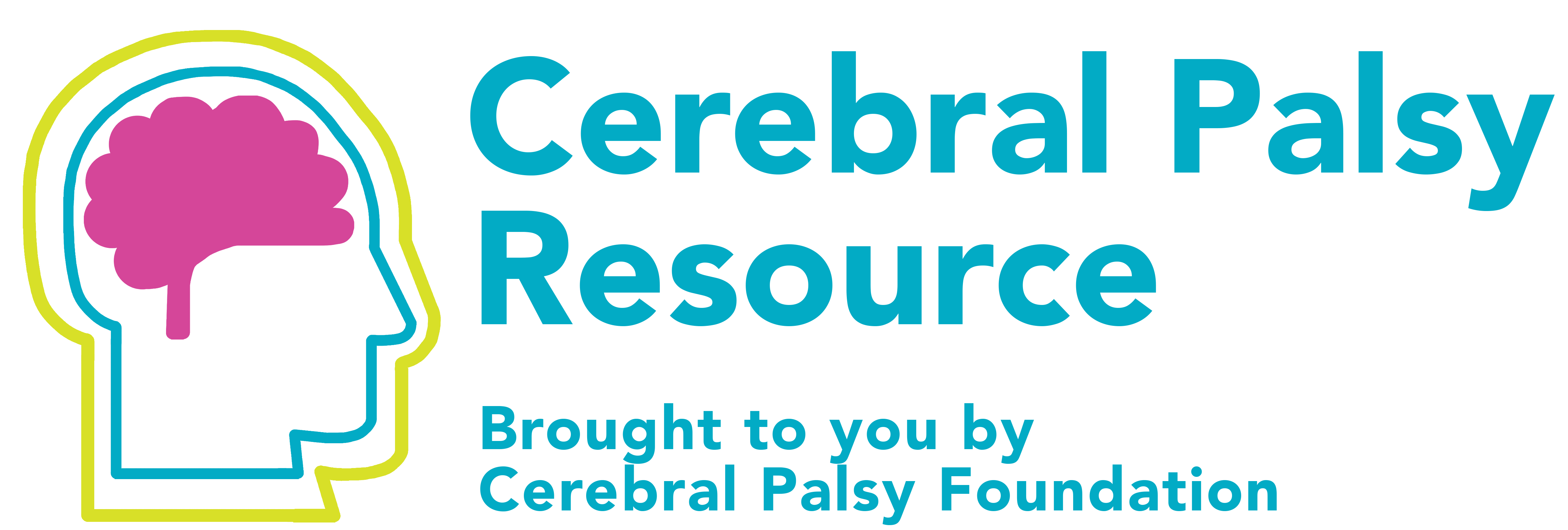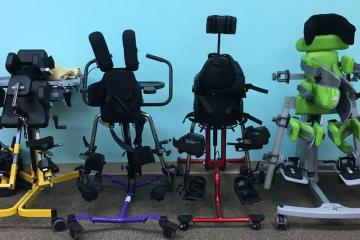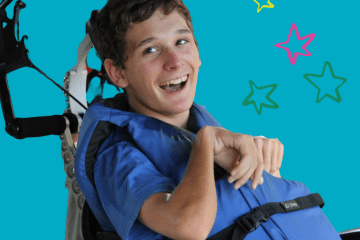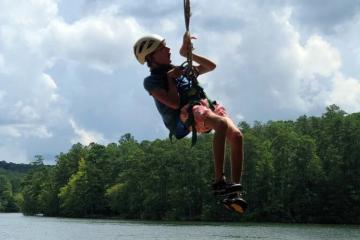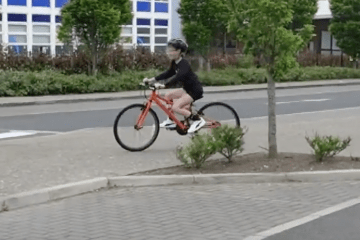Supported Stepping, what does the research say?
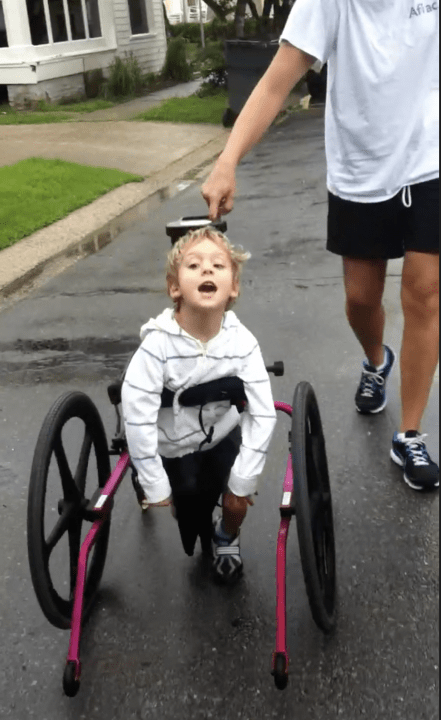
What is supported-stepping?
Supported stepping means using a device that supports an individuals’ trunk and pelvis, allowing active stepping over ground in home and community settings. These devices may also be referred to as stepping devices, gait-trainers or support-walkers. For individuals with non-ambulant cerebral palsy (CP), they are not used to train gait, since walking without the device is not an expectation.
What is the purpose of this research?
This review explored what is known about the use of stepping devices with individuals with CP who are classified as non-ambulant (Gross Motor Function Classification System (GMFCS) levels IV and V). We searched for all types of studies: systematic reviews, clinical guidelines, experimental studies, case studies, qualitative studies and expert opinion to see if there were different outcomes or experiences for different ages, GMFCS levels or device types as well as to understand the barriers and facilitators of stepping device use.
What TYPE of research was this?
We conducted a scoping review to map and describe the state of the evidence on supported-stepping device use. We identified 10 evidence reviews or guidelines, 53 research studies and 5 articles or book chapters providing expert opinion.
What were the findings?
Fitness: 632 therapists participated in surveys or qualitative studies, or wrote expert opinion articles. Increased physical fitness was the most common reason for recommending use of a stepping device with non-ambulant CP.
Functioning: Increased stepping, mobility, walking speed or distance was reported for 303 individuals. Increased use of arms and hands and improved trunk control were reported for 118 and 89 individuals.
Fun & friends: Improved self-esteem, confidence, and participation with peers were reported for 67 and 76 individuals.
Family: Parents were generally satisfied with devices, and negative comments mainly related to transfers and environmental access.
Future: Supported-stepping provides a new view on the world, where others see the person rather than the disability. It promotes the maintenance of physical health and provides an opportunity for age-appropriate experiences.
Feasibility: Supported-stepping device use is feasible for individuals functioning at both GMFCS IV and V. 705 individuals aged 9 months to 47 years were described in studies from North America, Europe, Australia and India.
Barriers: Pain, increasing physical deformity and difficulties with transfers were associated with decreased use in adolescence and adulthood.
Facilitators: Caregiver support and integration into meaningful activities and routines were associated with successful and ongoing use of stepping devices.
Use: 30-60 minutes, 5-7 days a week was typically reported, but some individuals used them up to 4 hours daily.
What are the next steps?
No clear trends were identified regarding device type, GMFCS level or age. Research on all aspects of stepping device provision and use is still needed.
What does this mean for families?
Children functioning at GMFCS IV and V should be provided with age-appropriate opportunities for movement in upright positions starting between 9 and 15 months of age.
Stepping devices should be individually selected and provided to address physical support needs, transfers, environment, caregiver needs and opportunities for inclusion and participation.
For individuals at GMFCS IV and V, the focus of stepping device use is not walking speed or gait pattern, but physical health and fitness, participation, engagement, inclusion with others, and quality of life.
Supported-stepping provides a new view on the world, where others see the person rather than the disability. It promotes the maintenance of physical health and provides an opportunity for age-appropriate experiences.
Use of Overground Supported-Stepping Devices for Non-Ambulant Children, Adolescents and Adults with Cerebral Palsy: A Scoping Review
Livingstone, R.W.; Paleg, G.S.
Disabilities 2023, 165-195.
https://doi.org/10.3390/disabilities3020012
